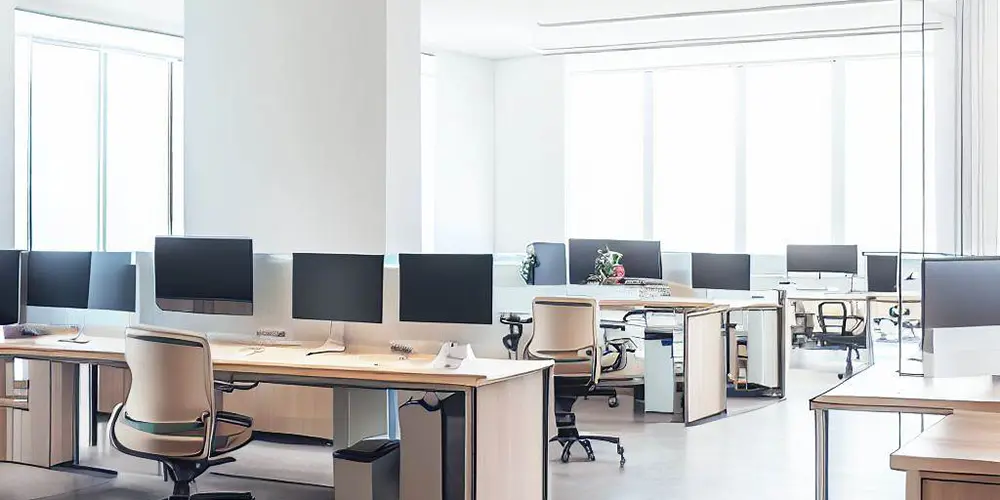JOIN US FOR THE NEWEST LED LIGHTS IN MARKET
Enter your email below to get 10% off your first order

How office lighting affects productivity? The quality of office lighting plays a crucial role in employee productivity, health, and overall well-being. A well-designed lighting scheme can boost concentration, reduce fatigue, and enhance mood. However, poor lighting can have the opposite effect, leading to eye strain, headaches, and decreased performance. In this blog post, we will delve into the ways office lighting affects productivity and offer tips for creating an optimal lighting environment that promotes success.
The Connection Between Lighting and Circadian Rhythms
Our bodies operate on an internal clock known as the circadian rhythm, which regulates our sleep-wake cycle. Exposure to natural light during the day helps maintain this rhythm, keeping us alert and focused. Inadequate or artificial lighting can disrupt our circadian rhythm, leading to fatigue, difficulty concentrating, and reduced productivity.
The Impact of Brightness and Illuminance
Appropriate lighting levels are essential for maintaining productivity. Insufficient lighting can cause eye strain and fatigue, while overly bright lighting can lead to glare, headaches, and discomfort. Ideally, office lighting should provide 300-500 lux for general tasks and 500-750 lux for more detailed work, according to the Illuminating Engineering Society (IES) guidelines.
The Importance of Color Temperature
Color temperature is a measure of how warm or cool a light source appears. Cooler color temperatures (4000-5000K) have been linked to increased alertness and focus, making them suitable for task-oriented spaces. Warmer color temperatures (2700-3000K) are associated with relaxation and are more appropriate for break areas. Choosing the right color temperature for specific areas can significantly impact employee productivity.
The Benefits of Natural Light
Natural light has been shown to improve mood, enhance alertness, and boost productivity. Exposure to sunlight can increase the production of serotonin, a hormone associated with happiness and well-being. Whenever possible, maximize the use of natural light in your office by placing desks near windows and using translucent window treatments to diffuse light.
The Role of Glare and Visual Comfort
Glare can cause eye strain, headaches, and reduced productivity. To minimize glare, use indirect lighting solutions, such as pendant lights or wall sconces, and install light diffusers or louvers on overhead fixtures. Design your office layout to ensure that computer screens are positioned to avoid reflections and consider using anti-glare screen protectors.
The Power of Task-Based Lighting
Different tasks require different lighting levels. Providing task-based lighting allows employees to adjust the brightness at their workstations to meet their specific needs. Adjustable desk lamps with dimming capabilities can help create a comfortable and personalized work environment.
How Biophilic Design Influences Productivity
Incorporating elements of nature into your office design, such as natural light, plants, and natural materials, can have a positive impact on employee well-being and productivity. Biophilic design principles can help create a more inviting and inspiring work environment, promoting creativity and engagement.
Understanding the complex relationship between office lighting and productivity is essential for creating a successful work environment. By considering factors such as brightness, color temperature, glare, and natural light, you can design a lighting scheme that supports employee well-being and enhances productivity. Remember, a well-lit office is more than just a comfortable space – it’s an investment in the success of your business.
$99.00 Original price was: $99.00.$79.00Current price is: $79.00.
$199.00 Original price was: $199.00.$99.00Current price is: $99.00.
$1,299.00 Original price was: $1,299.00.$1,189.00Current price is: $1,189.00.
$299.00 Original price was: $299.00.$279.00Current price is: $279.00.
$299.00 Original price was: $299.00.$279.00Current price is: $279.00.
$299.00 Original price was: $299.00.$259.00Current price is: $259.00.
$499.00 Original price was: $499.00.$399.00Current price is: $399.00.
$299.00 Original price was: $299.00.$189.00Current price is: $189.00.
$299.00 Original price was: $299.00.$259.00Current price is: $259.00.
$199.00 Original price was: $199.00.$119.00Current price is: $119.00.
$699.00 Original price was: $699.00.$239.00Current price is: $239.00.
$699.00 Original price was: $699.00.$389.00Current price is: $389.00.